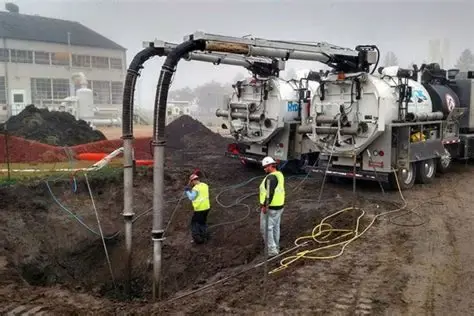How to Start a Pipeline Jetting and Inspection Business
- Nate Jones
- Oct 2
- 2 min read
Pipeline jetting and inspection services are essential for maintaining clean, safe, and efficient underground infrastructure. As cities expand and aging pipelines require more frequent maintenance, demand for these services continues to grow. If you're considering launching a pipeline jetting and inspection business, this guide will walk you through the key steps to get started.

Step 1: Understand the Industry
Pipeline jetting involves using high-pressure water jets to clean sewer and water pipelines. Inspection services typically use CCTV cameras, drones, or robotic crawlers to detect leaks, blockages, and structural issues. These services are vital for municipalities, industrial facilities, and utility companies.
Step 2: Develop a Business Plan
Your business plan should include:
Target markets (e.g., municipal contracts, industrial clients)
Startup costs and funding sources
Equipment needs
Marketing strategy
Revenue projections
A well-structured plan will help guide your operations and attract investors or lenders.
Step 3: Invest in Equipment
Essential equipment includes:
Jetting machines (electric, trailer-mounted, or truck-mounted units)
Inspection tools (CCTV systems, robotic crawlers, drones)
High-pressure pumps and nozzles
Startup costs can range from $100,000 to $400,000 depending on the scale of operations and equipment quality.
Step 4: Obtain Licenses and Permits
Licensing requirements vary by state and municipality. You’ll typically need:
A business license
Contractor’s license (if applicable)
Environmental permits for wastewater handling
Check with your local regulatory agencies and the PHMSA Pipeline Safety Program for federal guidelines.
Step 5: Get Business Insurance
Pipeline jetting and inspection involve high-risk activities. Protect your business with:
Excavating Insurance Partners specializes in insurance for hydro excavation and pipeline contractors. We offer tailored coverage to protect your equipment, employees, and operations. Learn more at Excavating Insurance Partners.
Step 6: Hire and Train Your Team
Hire skilled technicians and provide training in:
Jetting safety protocols
Inspection technology
OSHA compliance
Proper training reduces liability and improves service quality.
Step 7: Market Your Services
Build a professional website and optimize it for SEO. Use keywords like:
“Pipeline jetting contractors”
“Sewer inspection services”
“CCTV pipeline inspection”
“High-pressure pipe cleaning”
“Utility line inspection companies”
Attend trade shows, join industry associations, and network with municipal decision-makers to grow your client base.
Final Thoughts
Starting a pipeline jetting and inspection business requires technical expertise, strategic planning, and proper insurance coverage. With the right foundation, you can build a profitable company that serves clients across the U.S. Contact Excavating Insurance Partners today!





Comments